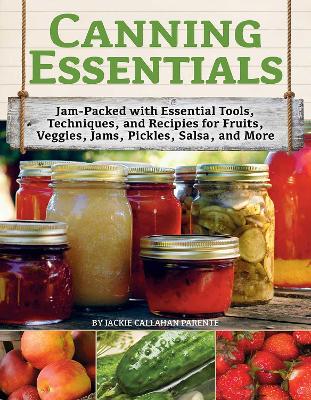Reviewed by annieb123 on
Canning Essentials is a tutorial and cookbook aimed at the beginning canner/food preserver. Due out 9th April 2020 from Fox Chapel, it's 176 pages and will be available in paperback format. The content included in Canning Essentials was previously published as Can It (2012), this appears to be a reformat and re-release. I don't have both editions for comparison, so I'm not able to speak to any content differences.
There are so many classic canning and preserving cookbooks that it's a difficult niche to find something truly new and breakthrough. Although I think most cooks who have experience with canning have a copy of Ball's Blue Book lying around, it's also nice to get some new recipes to try out and this collection has some interesting ones.
The layout is standard: the introductory chapters cover equipment, supplies, ingredient choices, and some basic safety. The following chapters include instructions, storage, and food safety for freezing and canning. The second half of the content includes the recipes and there are some interesting ones: curried apple chutney (a savory chutney), cinnamon pickles made with 'red hots' candies, along with a number of others. For cooks who prefer to do everything from scratch, this book does generally use pre-purchased pectins, stabilizers, and color protectants. The photography is adequate, but mostly not original to this volume (shutterstock, and creative commons licensed photos). The photos are well done, however, and it's nice to have nearly all of the recipes photographed.
Each of the recipes includes an introductory description, ingredients listed in a bullet point sidebar (US measurements only, no metric conversions), and step by step instructions. There is no metric conversion provided in the book. The appendices do include helpful tables for larger measures of ingredients (bushels, pecks, etc) along with expected poundage for various vegetables and fruits and hints and tips from the author for processing and preserving.
In general this is a good starting volume for beginners with some interesting recipes. Most of the yields for the recipes make a fair bit of product (5-10 pints at a minimum), so testing out a recipe will require some commitment in time and materials. I recommend it, but don't think it will be replacing my Ball Canning Book.
Three stars.
Disclosure: I received an ARC at no cost from the author/publisher for review purposes.
Reading updates
- Started reading
- Finished reading
- 25 January, 2020: Reviewed
